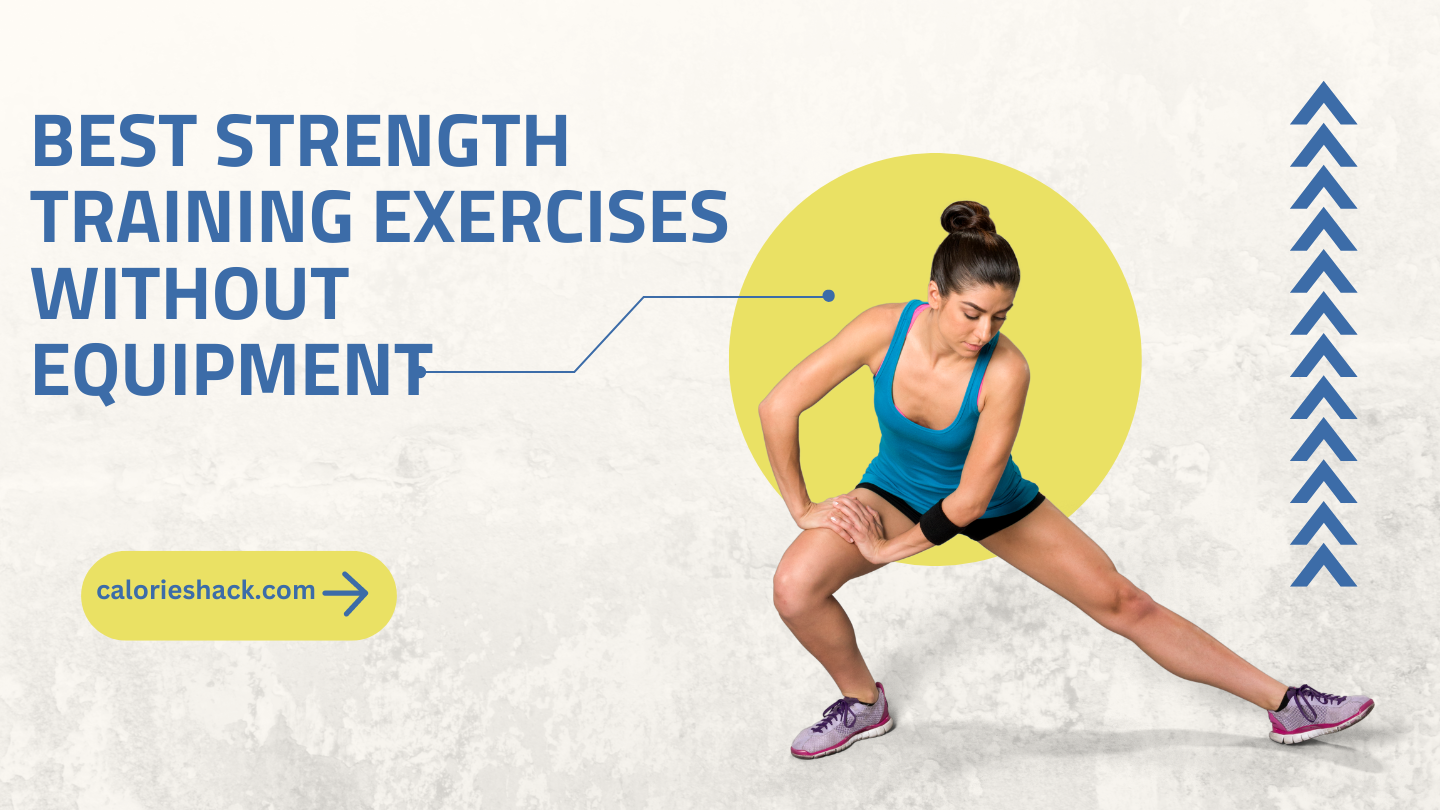It might be challenging to determine where to begin strength training. There are several workouts you may undertake to target a variety of muscles. There are safety considerations to consider, as well as a diverse range of sometimes complex equipment to navigate.
However, it does not have to be that intimidating. We're here to help with a primer on the fundamentals of strength training to get you started—and to assist you in developing a regimen geared toward attaining your unique objectives.
Benefits of Strength Training

Strength training, which includes using resistance to test and grow your muscles, should be a crucial component of your exercises regardless of where you are in your fitness journey. Strength training may have several advantages, including:
- Burn more fat: Muscle is more metabolically active than fat, therefore having more of it increases your daily calorie burn.
- Avoid injury: robust muscles indicate robust, supportive bones and connective tissue. All of this adds to a physique that can tolerate greater stress than those who do not engage in strength training.
- Stay young and healthy: Resistance training has been shown to benefit heart health, bone health, blood pressure, cholesterol, bone density, low back discomfort, sleep, and arthritis/fibromyalgia symptoms.1
- Improve mood: Strength training has been shown to produce endorphins, which helps relieve anxiety and despair.2
Be sure to check with your doctor before you start lifting weights if you have any concerns, medical conditions, injuries, or illnesses.
Recommended to read:
- Exercise Routines For Teenage Girls 25 Tips
- Rowing Machine Workouts: Health Benefits, How To Get Started,
- 15 Of The Best Barre Workouts In Every City
- Health Benefits Of Barre Workouts
Lifting Weights vs. Cardio
Many individuals underestimate the importance of strength training. Indeed, the data on strength training are dismal.
In 2018, approximately 50% of American adults engaged in cardio exercise, but less than 30% met the recommended minimum guidelines for muscle-strengthening activities such as lifting weights, yoga, heavy gardening, or push-ups at least twice a week.
Common Misconceptions
Many people have misconceptions about strength training that keep them from doing it. Learning the realities may help you get started.
- You don't have to join a gym. There are lots of benefits to working out at home—it's free, convenient, and private. A plethora of DVDs. online resources, and phone apps can help you direct your sessions if desired.
- You're not expected to know how all of the gym equipment works. Take advantage of the free orientation and learn how to properly use everything that's offered and set up a basic strength-training program. Most weight machines require little coordination and offer more stability than free weights while performing the movements.
- You don't have to use weights or machines. Anything that provides resistance can do the job. This includes resistance bands or your own bodyweight.
For novices, starting with only your bodyweight will suffice. But without more resistance, it might be difficult to keep pushing your body, therefore in order to advance, you'll need some equipment.
You'll probably want to spend money on certain essentials like resistance bands, weights, and an exercise ball if you want to strength train at home.
A light set (one to five pounds for women, five to eight pounds for men), a medium set (five to ten pounds for women, ten to fifteen pounds for men), and a heavy set (ten to twenty pounds for women, fifteen to thirty pounds for men) should ideally be kept in a range. A set of adjustable dumbbells will also function.
Read also:
- Sitting All Day? 6 Reasons You Might Want To Worry
- 4 Weight Loss Treadmill Workouts For Older Adults
- The 7 Minute Plank Challenge To Master For 2024
- Narcissism Vs Self Care? How To Tell The Difference
Getting Started
You should be familiar with the words rep and set.Reps, or repetitions, are one set of an exercise, such a dumbbell bicep curl. The number of consecutive repeats is called a set. Say, "I performed two sets of ten reps of bicep curls," as an example.Build the following guidelines into the structure of your workout:
- Start with a short, simple program. Your goal is to do a routine that works for all muscle groups on two non-consecutive days a week. This will help you build a strong foundation and allow you to progress from week to week.
- Choose the right amount of weight to lift. The key is to use weights that are not too light and not too heavy. You'll know it's too light if you can do an entire set with minimal effort. It's too heavy if your form is sacrificed or it just feels too taxing. Just right is a challenging effort that you can do with proper form and control and without excess strain.
- Warm up first. Warm muscles are less susceptible to injury, so do 5 to 10 minutes of cardio or some warm-up sets of each exercise in your workout using a light, easy to lift weight.
- Focus on form. Good form means lets you reap all of the benefits of your workout and avoid injuries at the same time. To maintain proper form, pay attention to your posture (stand tall with chest lifted and abs held tight), move slowly (this ensures you're relying on muscles, not momentum, to do the lifting), and remember to breathe. Many people hold their breath while exerting, but exhaling during the hardest part of the exercise helps fuel the movement. Many modern interactive fitness mirrors bring the guidance of a trainer right into your living room.
- Give yourself at least a day of rest to recover. Rest days are crucial for building lean muscle tissue and preventing injury, so try not to work the same muscle groups two days in a row. Some people like to break up strength training by concentrating on their upper body one day and their lower body the next, and that's perfectly fine.










